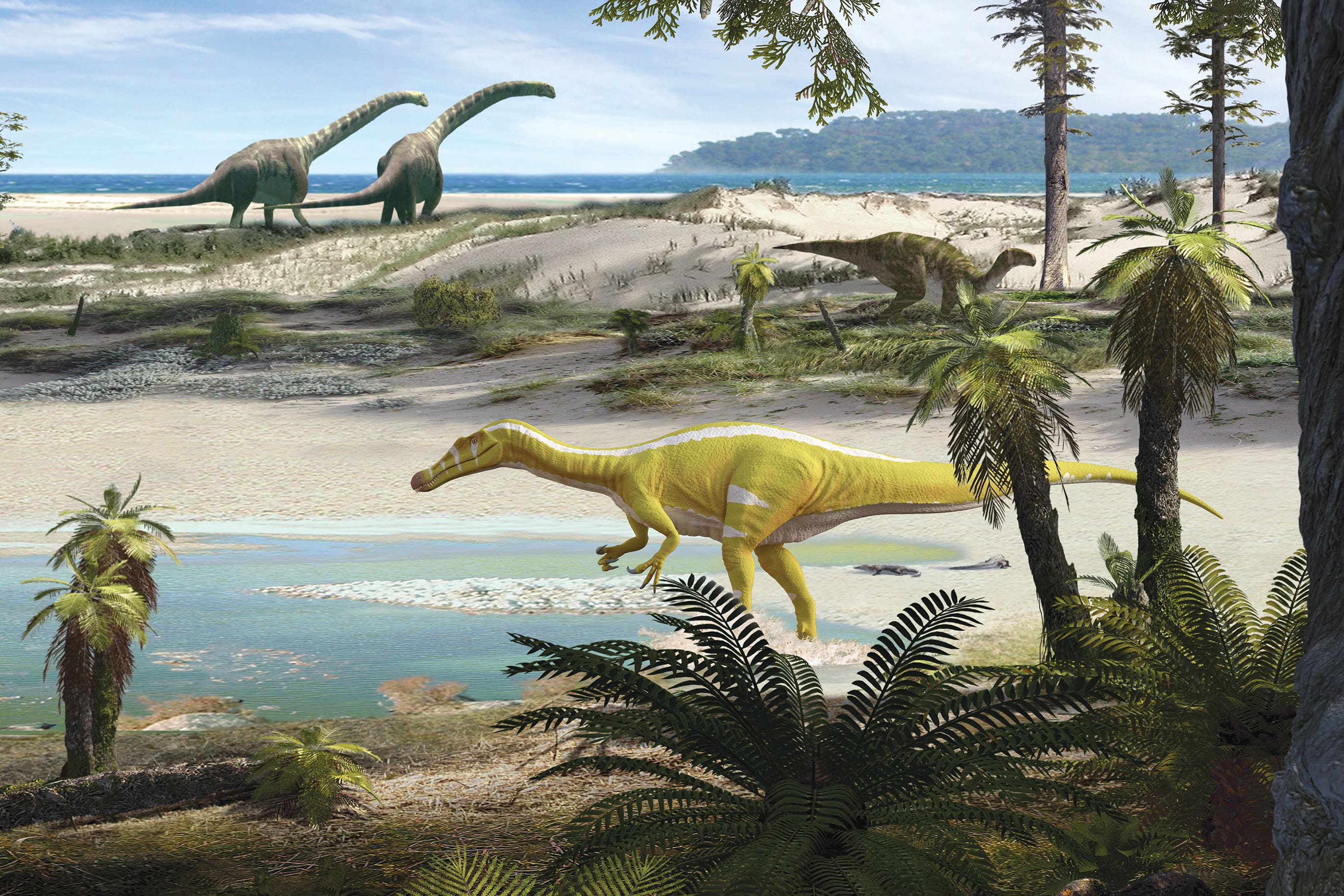
Palaeontologists have discovered two new species of dinosaur, with one set of fossil fragments coming from a creature thought to be one of the largest to ever exist.
Uncovered in Argentina’s southern Patagonia region, the gigantic species of long-necked herbivorous dinosaur would have weighed 50 tonnes and measured 30 metres in length – roughly equivalent to that of a blue whale.
Its bones were so big that they caused a van carrying them to a laboratory to tip over, with scientists naming the dinosaur ‘Chucarosaurus Diripienda’, meaning scrambled, after its remains were rolled around during the car accident.
The dinosaur lived during the Late Cretaceous period, between 100.5 million and 66 million years ago.
A study published on Thursday described the dinosaur as having “relatively slender fore and hindlimbs” despite its gigantic size.
Separate fossil fragments discovered in Spain, also reported in a study on Thursday, have shed light on a potentially new species of spinosaurid dinosaur.
Andres Santos-Cubedo from Jaume I University, and colleagues, analysed fossil fragments – a right jaw bone, one tooth and five vertebrae – discovered previously in the Arcillas de Morella Formation in Spain and dated to the late Barremian, Early Cretaceous period (between 127 and 126 million years ago).

Based on the remains, the researchers estimate the dinosaur was about 10 to 11 metres long.
Spinosaurids comprise different groups of dinosaurs that are often large, meat-eating animals that stand on two feet.
They are thought to have originated in Europe and then migrated to Africa and Asia.
The researchers compared the newly-discovered specimen with data on other spinosaurids to determine its evolutionary relationship to other species.
According to the findings, the specimen found in Castellon is both a new species and a new genus of spinosaurid and they named it Protathlitis cinctorrensis.
The genus is named Protathlitis meaning “champion” in Greek and cinctorrensis is in reference to the town - Cinctorres - in which the specimen was uncovered.
The researchers suggest this new species may indicate that spinosaurids appeared during the Early Cretaceous in Laurasia, a large area of land in the northern hemisphere, with two sub-groups of species occupying western Europe.
Writing in the Scientific Reports journal, the authors said: “It seems that spinosaurids appeared during the Early Cretaceous in Laurasia, with the two subfamilies occupying the western part of Europe during this period.
“Later, during the Barremian-Aptian, they migrated to Africa and Asia, where they would diversify. In Europe, baryonychines were dominant, while in Africa, spinosaurines were most abundant.”
Additional reporting from agencies







